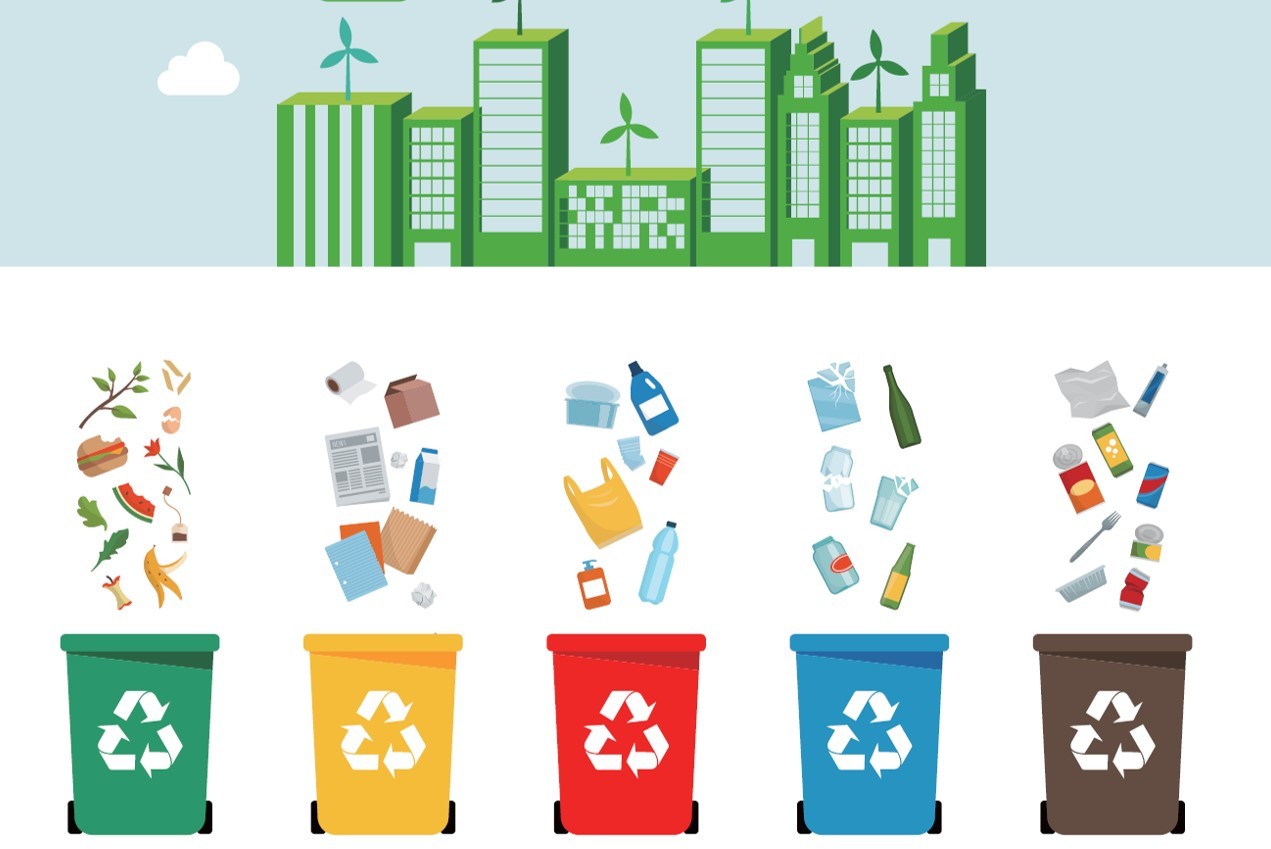Plastic waste and disposable packaging are overflowing as coronavirus concerns prompt more South Koreans to shop online and order delivery food or takeout coffee.
According to the Ministry of Environment, the amount of plastic waste generated last year increased by 20 percent compared with the previous year. Paper waste increased by 25 percent on-year.
Korea introduced a garbage volume-rate system in 1995, meaning people have to pay for garbage bags as an incentive to minimize trash. The country began separating its recyclables the same year. But officials and civic groups say about half of all the household waste that people put into recycling bins is immediately discarded. Conversely, about 10 percent of the contents of regular garbage bags is recovered and used in some way.
How to discard wasteItems that are stained, too small, or made of more than one material cannot be recycled. To increase recycling efficiency, you can sort through your bottles and containers, rinse them with water, and separate them. It is also helpful to check the recycling symbols on the back.
Boxes should be disposed of after removing other materials such as tape.
For milk containers, tying them together and separating them from paper waste helps to ensure they are recycled. The recycling processes for paper and paper packs are different. Paper is reborn as paper, while paper packs are turned into toilet paper and tissues.
For plastic bottles, empty out the contents, rinse the bottles, and remove any attached trademarks or foil. The lids should be recycled separately.
Stickers should be removed from plastic wrap and caps from containers of wet wipes.
For glass bottles, some are refillable and others have to be recycled. Soju and beer bottles are refillable and can be returned to retail stores for a 100-won refund. Refillable bottles have a symbol featuring a green bottle with the words “100 won” inside. When returning bottles, ensure that the cap is closed to prevent the mouth from breaking.
Other glass bottles are recycled as glass tableware. Mirrors, light bulbs, broken glass, ceramics, heat-resistant utensils, crystal products and glass caps are not recyclable.
Some waste is often mistakenly believed to be recyclable.
Plastics are classified into seven types, depending on the raw materials used: PET, HDPE, PVC, LDPE, PP and “other.” Composite plastics made from two or more raw materials are classified as other plastics, which cannot be recycled. Examples include “haetban” packs of instant rice.
Disposable spoons and straws are too small to be recycled. Products made of composite materials, such as toothbrushes and toys, are trash. Food-stained plastic containers and plastic wrap should be discarded as general waste. Most cosmetics containers are made of composite materials and are not recyclable.
Disposable containers for takeout drinks from cafes are mostly not recyclable. Polyethylene is used to line paper coffee cups and noodle containers to prevent the paper from getting wet. Plastic cups for iced beverages cannot be recycled if there is a company logo on them, because of the ink.
More efforts needed
According to Greenpeace statistics, only about 20 percent to 30 percent of household waste is actually recycled, with the government not disclosing accurate data.
Eeo Yong-sun, a manager of the Seoul Metropolitan Government’s resource circulation policy team, said due to economic feasibility and technological difficulties, not much household waste can be recycled or reused.
“Every product is recyclable. But we also need to consider the time, energy, money and workforce spent on recycling,” he said.
So the government is seeking alternatives. It burns waste and uses the heat to generate power. Through this process, as of 2016, Seoul City said it made use of 63.1 percent of household waste -- based on a combination of actual recycling and power generation. Nationwide, the figure was 35.8 percent.
“There is a limit to drastically increasing the recycling rate,” Eeo said. “The best thing is to make products recyclable in the first place at the manufacturing stage, and reduce overpackaging and disposable consumption.”
Hong Soo-yeol, a manager at Resource Recycling Consulting, concurred.
“The government should also educate consumers and clearly indicate what is and is not recyclable so that consumers can access it simply. Consumers should also pay more attention when consuming products and discharging waste.”
By Shin Ji-hye (
shinjh@heraldcorp.com)








